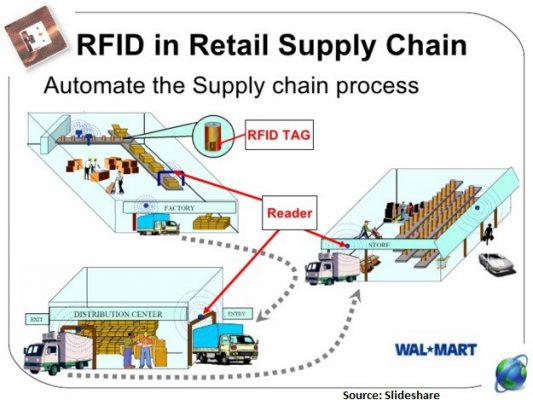1. RFID labels: How effective is inventory management?
- In the ever-evolving world of inventory management, there is always a focus on improving efficiency.
- Companies of all sizes regularly evaluate their current capabilities and seek to maximize the efficiency gained from existing infrastructure while equipping them to apply new technologies. new to be able to take their performance to the next level.
- It is more important than ever in operations management to conduct thorough research and analysis of the appropriate ROI (Return On Investment) index to fully understand the impacts that any changes may cause to the overall operations of the business.
- A growing technology that is receiving a lot of attention with the potential to revolutionize inventory management is RFID (radio-frequency identification).
- Here we will learn about the current situation of usingRFID tags and some detailed information about the utility of this solution compared to the previous leading solution in tracking Asset and inventory management (barcode – barcode)
2. Definition of RFID
- RFID tags Using RFID for inventory management requires a scanner that uses radio waves to communicate with RFID tags< /strong> (hardware) and software for system management.
- The card itself contains a microchip that allows the scanner to read/write data to the card to update data on the spot in real time.
- Each card is covered with plastic or paper for protection and can have information printed and stuck on many different surfaces for tracking.
- Most tags used for inventory tracking are passive RFID tags, which means they do not contain a battery and are powered by waves from a reader.
3. Benefits of using RFID tags in inventory management
- Using RFID tags for inventory management offers a number of benefits, such as reduced labor costs and faster scanning, as follows:</li >
- Improved visibility and faster scanning: Because RFID tags do not require a direct line of sight to read like barcodes, so we can scan RFID labels at a distance to process inventory faster.
- RFID tags can also be read in any direction and provide better visibility into inventory with the ability to update and scan locations more frequently.< /li>
- Reduce labor costs: With labor costs accounting for 50-80% of total business costs.
- RFID labels offer potential benefits in this aspect.
- Inventory checking, counting and lot verification can be done very quickly and automatically in a few scans without the need for many processing staff.
- RFID Label Asset Tracking: For companies such as transportation, logistics,…
- Using assets such as containers and pallets, it often takes a significant capital investment to protect the assets.
- UsingRFID tags allows these assets to be tracked through the entire supply chain loop and increases visibility across inventory locations.</li >
- Thereby, RFID labels help businesses improve profits and limit the risk of theft or neglect of assets.
4. How does RFID work in warehouses?
- Before a shipment is sent to the warehouse, a tag or RFID chip is attached to individual items or the entire pallet. This RFID tag stores important information about the item.
- When the shipment arrives, each RFID tag transmits its information to readers installed in the warehouse. These readers will be placed in appropriate positions in the receiving area to receive the best possible signal.
- Data is transmitted via radio waves and relayed from the reader to the central warehouse management system. The information can then be modified and transmitted back to the RFID tag.
- This provides warehouse keepers with the ability to perform tasks such as real-time asset counting and other advanced inventory operations.


5. RFID has increased accuracy ininventory management?
Using an RFID inventory management system has been shown to improve inventory accuracy by up to 13% compared to traditional inventory tracking and stock checking methods. Manual inventory in some situations. Especially in the retail industry, where inventory accuracy must be maintained continuously, implementing an automated system will bring many benefits.
Vi. Choose the appropriate RFID Chip:
- Locate products to try RFID
- RFID System’s operating environment
- Applicable product value
- What are the monthly usage needs?
- RFID frequency is short (RF) or far (UHF).
- Density of goods in the warehouse.
- How to place the product to be placed (high, low)
- Does the shelf have a lot of Metal objects?
- Is the product reusable?
- How long should it be stored?
VII.Frequently asked questions when Implementing an RFID System.
- Is it difficult to operate the system?
- Is the device running stably?
- Do RFID chips often increase in price?
- Can I use other types with other uppers?
- Can I buy the software myself?
VIII. List of equipment that needs to invest in an RFID system.
- Antenna.
- Fixed RFID redear.
- Handheld long-range RFID reader.
- Printer records RFID data.
- RFID label
- RFID cable.
* Frequently encountered problems:
- The system needs to operate according to the process
- High discipline.
- Be neat in the process of arranging goods.
- Apply RFID labels
- Stable network system.
- Training personnel to understand RFID and IOT Technology
- Need to backup plan when operating.
- Plan standard goods
- Replacement operating equipment inventory.
- Stable supply of RFID Chips
- Periodically check the system
- Initial investment costs are quite high.


